Welding stainless steel and mild steel together can present unique challenges, as the two metals have different properties and react differently to heat. TIG welding is a great method for welding these two metals together, as it allows for precise control and minimal heat input. However, getting the right technique and equipment is key to achieving a strong, clean weld.
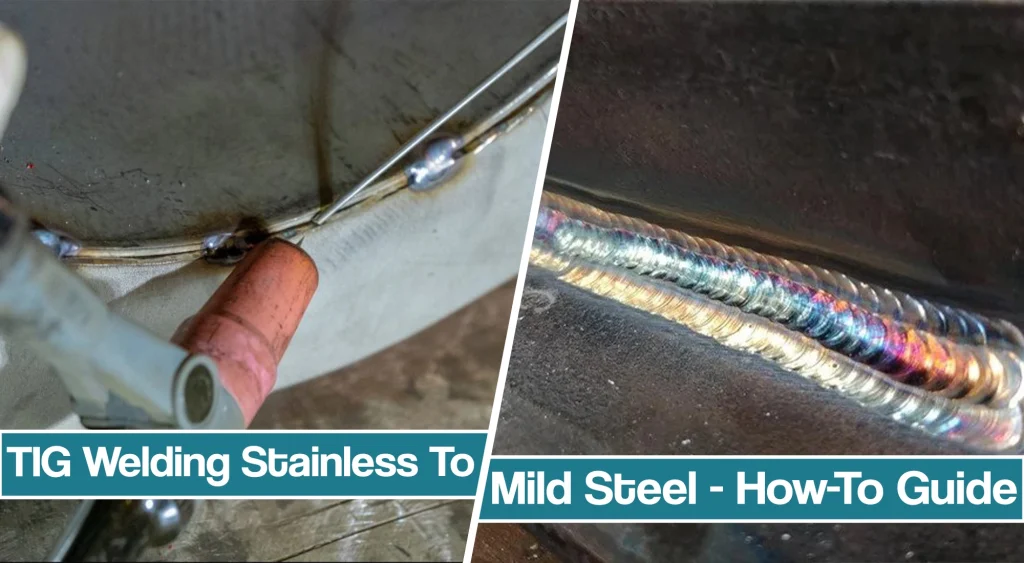
In this article, we will take you through the process of TIG welding stainless steel to mild steel, including tips and tricks for achieving a successful weld every time. From selecting the right filler metal to controlling your heat input, this guide will give you the knowledge you need to tackle this type of welding with confidence.
First, Can You Weld Stainless Steel To Mild Steel?
Yes, welding stainless steel to mild steel is possible. However, there are potential issues that you must pay attention to in order to ensure a successful weld.
First and foremost, you should be aware of the different mechanical properties of the two metals. Mild steel has somewhat of a lower melting point than stainless steel, Stainless steel’s melting point starts somewhere around 2550°F and for mild steel, its starts at 2462 °F. Thus more prone to warping with too much heat. Furthermore, the coefficient of thermal expansion of mild steel is much higher than that of stainless steel, which can cause cracking during the cooling process if not taken into account.
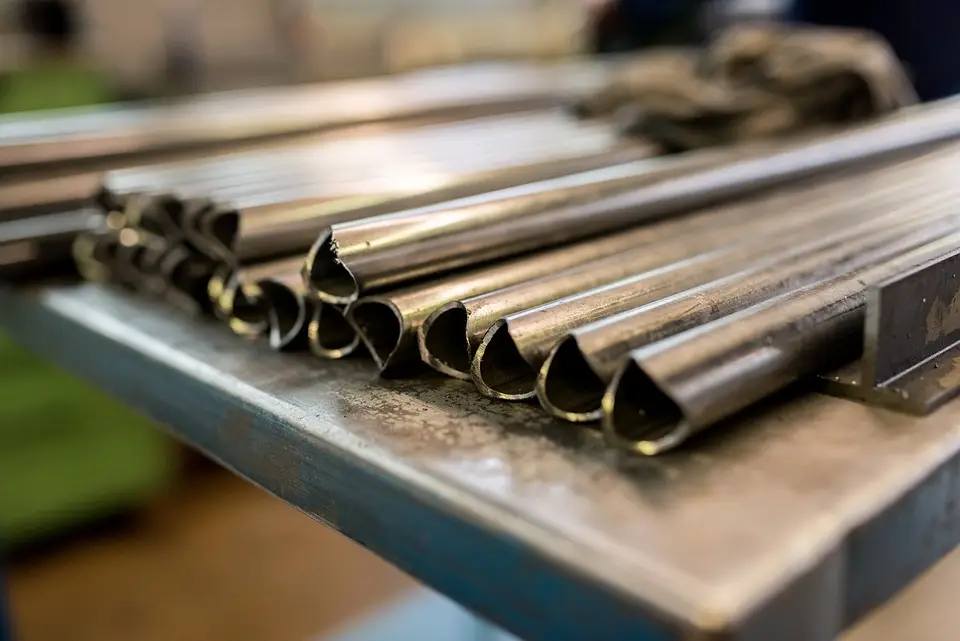
Additionally, you should be mindful of the distortion caused by the differential coefficients of expansion between these two metals and take measures to minimize it. For instance, stainless steel conduct heat, so you should use an appropriate preheat temperature before beginning the welding process – typically around 300°F for thick sections – and use multiple passes if necessary.
Furthermore, it is important to address any potential contamination from carbon steel particles on stainless steel surfaces when welding dissimilar metals together. To avoid this issue during stainless steel welding, you should make sure that all surfaces are properly cleaned prior to welding and keep their work environment free from dust and debris.
Why Choose TIG Welding When Joining Stainless Steel And Steel?
TIG welding is an ideal choice for joining stainless steel to mild steel due to how the GTAW process is clean, precise, and versatile. TIG welding uses a non-consumable tungsten electrode that delivers a precise current to the joint of the weld metal, allowing welders to control the heat input and produce high-quality welds.
The process also requires minimal cleanup and produces virtually no spatter or fumes. This makes it particularly well-suited for joining stainless steel to mild steel, as the welds are clean and accurate enough to prevent corrosion between the two metals.
The advantages of TIG welding over other processes, such as MIG or Stick welding, include its superior arc control, ability to weld in all positions, and ability to weld thin materials without burn-through.
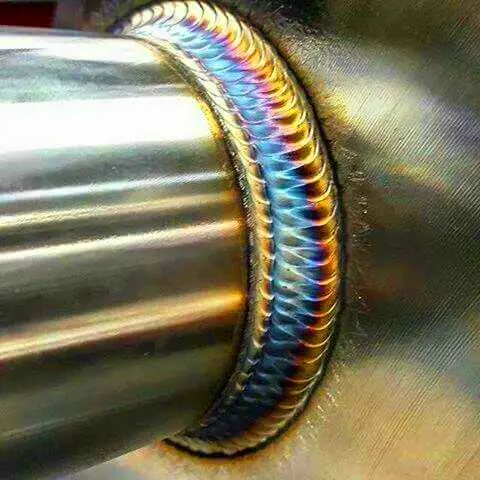
It also offers greater control over heat input than MIG welding, which allows it to be used in a wide variety of applications, including aluminum, titanium, magnesium, bronze, copper alloys, and dissimilar metals like stainless steel and mild steel.
However, one of the drawbacks of TIG welding is that it is a slower process than MIG or Stick welding due to its manual nature and the need for additional equipment, such as filler material. It also requires a higher degree of skill than other processes since it requires precise control of the arc throughout the entire operation.
How To TIG Weld Stainless Steel To Mild Steel – In Short
TIG welding stainless steel to mild steel requires careful preparation and the right equipment. The materials must be cleaned of any dirt, oil, or rust before welding in order to create a strong bond.
The required equipment includes a TIG welder with DC capabilities, an Argon gas cylinder, 2-3% thoriated tungsten electrodes, and filler rods with proper alloy content for the desired application
When welding mild steel to stainless steel, it is important to use a low amperage setting on the welder (between 40-90 amps) and keep the arc length as short as possible.
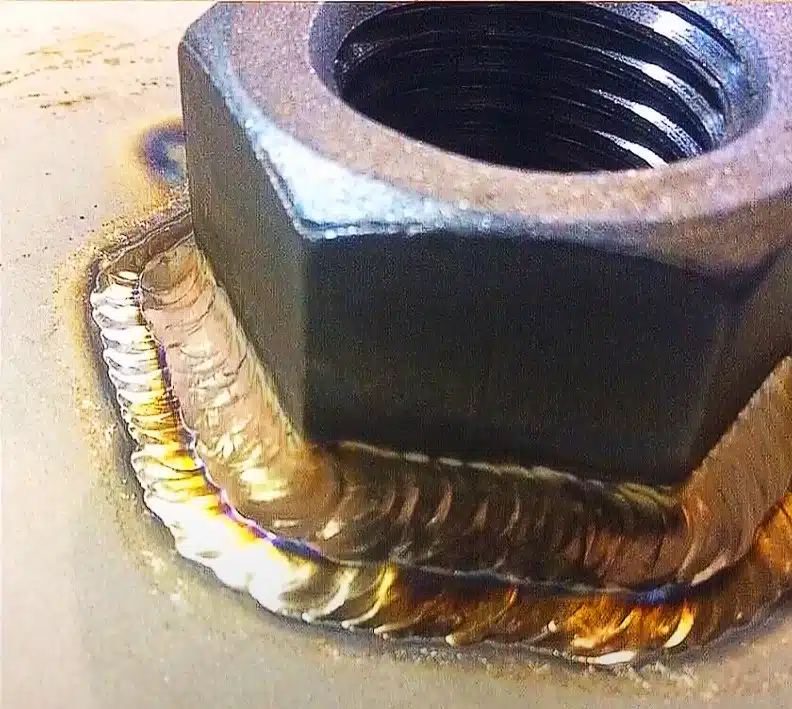
Once all components are in place, the process begins by setting up the TIG machine for DCEN operation and adjusting amperage accordingly. The tungsten electrode should be set at an angle of about 20-30° to the workpiece and positioned close to the joint edge. A ceramic cup should then be placed around the joint area, and Argon gas should be introduced into the cup at a flow rate of 15-25 CFH (cubic feet per hour).
The next step is striking an arc between the tungsten electrode and the metal being welded. This should be done slowly while maintaining a consistent arc length and angle in order to ensure proper penetration. As soon as an arc is established, the filler rod can be added to the joint area and melted into place using a slow circular motion. After each pass, examine for any defects or gaps in the weld area that need further attention before repeating the process until all areas are filled in. Finally, allow ample time for cooling before removing it from more heat and inspecting the final product for quality assurance.
TIG Welder For Dissimilar Metal Welding
The type of TIG welder required to TIG weld stainless steel to mild steel depends on the thickness and grade of the metals being joined.
For example, when welding mild steel to austenitic stainless steel, a TIG welder with an output of at least 150 amps is recommended for welding 1/8 in (3.2 mm) thick materials, while a 200-amp welder is recommended for welding 1/4 in (6.4 mm) thick materials.
In addition to the amperage rating, it is also important to consider the type of power supply used by the TIG welder. Most modern TIG welders use alternating current (AC) or direct current electrode negative (DCEN) power supplies, both of which are suitable for joining dissimilar metals such as stainless steel and mild steel. However, some applications may require a more specialized power supply like direct current electrode positive (DCEP), which is designed specifically for welding non-ferrous metals such as aluminum and copper alloys. In addition, having a foot pedal can help avoid applying more heat to heat affected zone.
Filler Metal Choice
E309 and E309L are two common filler metals recommended for welding stainless steel to mild steel. These austenitic stainless steel filler metals contain chromium, nickel, and molybdenum, which give them excellent corrosion resistance, strength, and ductility. They can also tolerate high heat input during welding with minimal distortion of the base metal. Additionally, they have low carbon levels that help to prevent carbide precipitation at the weld joint, which can lead to hot cracking and corrosion.
E309 welding rod is primarily used when welding austenitic stainless steels to mild steels with similar chemical compositions.
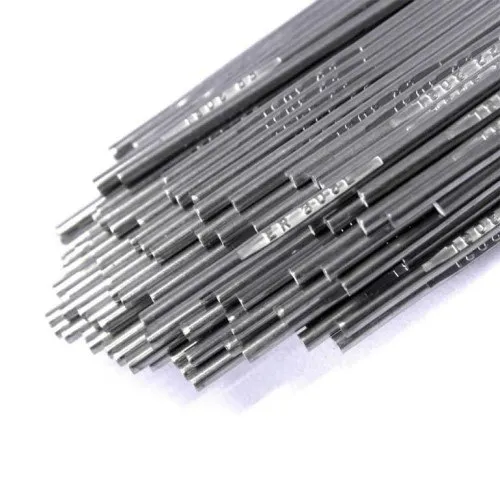
It can also be used when joining dissimilar grades of stainless steel or when welding thicker sections of stainless steel (over 3/8″). E309L welding wire is specifically designed for lighter gauge applications such as thin sheet metal or tubing and is typically used in place of E309 when welding thinner sections or dissimilar materials.
Tungsten For Stainless Steel To Mild Steel Welding
2% thoriated tungsten is a common choice for any steel welding, including TIG welding stainless steel to mild steel. It is an alloy that contains 2% thorium oxide and 98% tungsten, and it offers several advantages over pure tungsten.
The addition of thorium oxide to the tungsten alloy makes it more electrically conductive than pure tungsten, which allows for better arc starting and arc stability during the welding process. This increased electrical conductivity also allows for more precise control over the weld, resulting in cleaner welds with fewer defects.
Thoriated tungsten electrodes are also more durable than pure tungsten electrodes and last longer before needing to be replaced. This helps reduce costs for welders who use this type of electrode on a regular basis. Additionally, 2% thoriated tungstens are less prone to contamination from oxides or other materials in the welding environment, which helps ensure a higher quality weld.
Shielding The Weld
Argon is the most commonly used shielding gas for welding stainless steel and mild steel. Argon has a low thermal conductivity, meaning that it is less likely to cause warping or distortion of the weld area during cooling. Additionally, argon is an inert gas which helps protect the weld from oxidation and contamination by airborne contaminants.
The recommended shielding gas flow rate for TIG welding stainless steel to mild steel is between 15-20 CFH (cubic feet per hour). This flow rate ensures that there is enough shielding gas present around the arc and weld pool so that oxidation does not occur, while still allowing enough air in for proper heat transfer.
Ultimately, the correct shielding gas selection will depend on several factors including material thickness, joint geometry, welding speed and desired aesthetics of the finished weldment. In general, argon will provide good results when TIG welding stainless steel to mild steel but other shielding gases, such as 2% oxygen or helium can be used.
Weld Preparation
Prior to TIG welding stainless steel to mild steel, the weld preparation process must ensure proper surface cleanliness, adequate joint fit-up, and suitable joint geometry. These measures are necessary to ensure a successful weld and avoid problems such as cracking, porosity, and poor weld quality.
It is essential that the surfaces of both materials being joined are free from any contaminants such as oil, grease, paint, rust, scale, or other foreign substances.
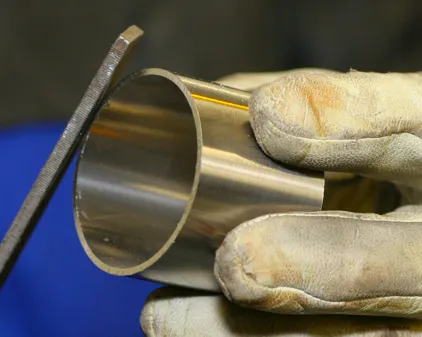
This can be achieved through mechanical cleaning methods such as grinding or wire brushing. If necessary, chemical cleaning agents can also be used to remove surface contaminants.
Proper joint fit-up is critical for a successful TIG weld. For stainless steel to mild steel joints, the gap between the two metals should generally be no more than 1/16 inch (1.6 mm). Any gaps wider than this may result in excessive penetration into the parent material which can cause cracking and other issues. Additionally, it is important to ensure that the joint surfaces are flush with each other so that there is even heat distribution across them during welding.
The joint geometry should also be taken into account when preparing for TIG welding stainless steel to mild steel. Generally speaking, lap joints are most commonly used for this type of application since they provide excellent access for welding penetration into both materials while still maintaining good structural strength. Depending on the size of the material being joined and other factors such as the desired weld appearance or structural requirements of the application, other types of joint geometries may also be suitable for use with TIG welding such as butt joints or corner joints.
Welding Technique For TIG Welding Stainless Steel To Mild Steel
TIG welding stainless steel to mild steel is a complex process that requires precise techniques in order to achieve a high-quality, reliable weld. To ensure a successful weld, it is important to consider the parameters of travel angle, welding speed, filler distribution and torch manipulation.
The travel angle should be set between 15-20 degrees when welding mild steel to stainless steel.
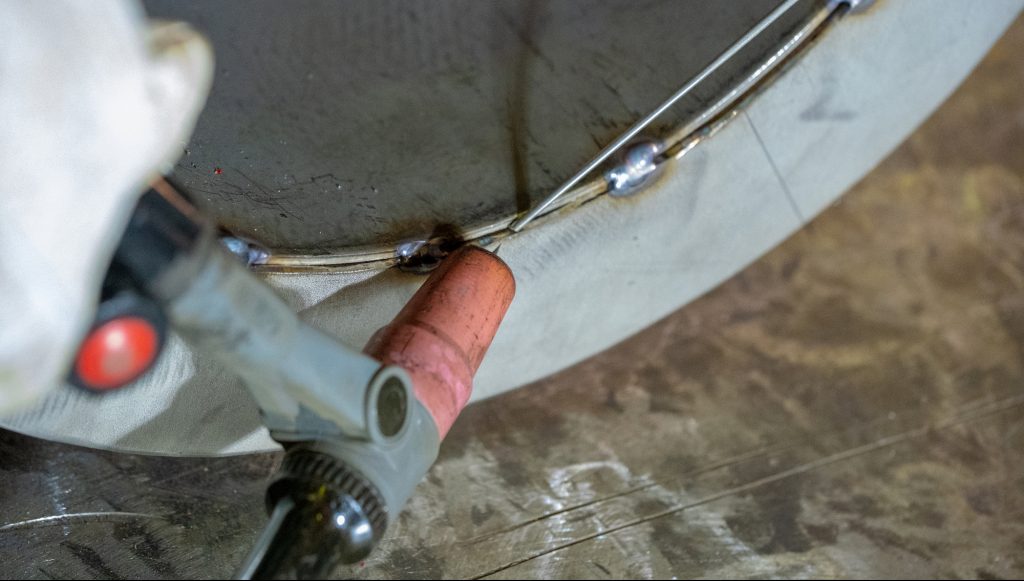
This will help create a stronger bond by reducing the risk of incomplete fusion. It also helps prevent warping and distortion of the base materials due to excessive heat input.
It is important to maintain a consistent and slow welding speed. This will help ensure an even heat input across the weld joint and prevent overheating of the base material due to excessive current.
The filler should be distributed evenly across the entire weld joint in order to ensure a strong bond and reduce the risk of porosity or incomplete fusion. It is also important to note that different types of filler materials may be required depending on the specific base materials being welded together, so it’s important to select a filler material that is compatible with both base materials.
A consistent back-and-forth motion should be used when moving the torch along the weld joint; this will help ensure an even heat input and reduce the risk of warping or distortion due to excessive heat input in one area. It’s also important not to dwell too long in one spot as this can cause over-penetration or undercutting of the metal, resulting in weakened joints or poor weld quality overall.
Post-Weld Treatment
With good preparation and adequate technique, the need for post-weld treatment on TIG welding stainless steel to steel is minimal. In most cases, and non-critical applications, you won’t need post-heat or stress relief procedures. However, critical applications can require a combination of heat treatments, such as solution annealing and stress relief annealing.
Quick Tips For Successful TIG Welding Stainless Steel To Mild Steel
- Use the correct type of TIG welding machine that is suited for working with both stainless steel and mild steel
- Make sure to use the correct type of filler metal when welding stainless steel to mild steel.
- Clean the surfaces and welding joint of the stainless steel and mild steel prior to welding in order to remove any contaminants that may be present on the surface
- Set the amperage correctly according to the thickness of both materials being welded together, as well as the type of joint being made (butt weld, lap joint, etc.).
- When using a TIG torch, maintain a constant distance between the tip and the material being welded.
- Maintain a consistent speed while welding in order to create even weld beads with minimal porosity or slag entrapment in the joint area.
- Follow all safety precautions when welding and ensure that you have appropriate protective equipment such as a welding helmet and gloves available at all times during the process.
Final Thoughts
Overall, TIG welding stainless to mild steel is a difficult task, but with the right techniques and TIG welding equipment, it can be achieved with great success. With proper preparation, the selection of appropriate filler wire, and correct amperage settings, a strong connection between the dissimilar welds can be created.
Fortunately, our article provides valuable resources for welders seeking to learn more about TIG welding mild steel to stainless steel. With these tips in mind, welders can confidently join these two metals for various applications. I hope this article on how to weld stainless to mild steel helped you in the stride to become a better welder if you want to read more on how to TIG weld other metal alloys, you can jump here.
Resources:
- https://www.hobartbrothers.com/resources/technical-articles/how-to-weld-stainless-steel/
- https://forum.millerwelds.com/forum/welding-discussions/11166-welding-stainless-to-mild-steel
- https://blog.thepipingmart.com/metals/can-you-weld-stainless-steel-to-mild-steel/
- https://www.marlinwire.com/blog/welding-carbon-and-stainless-steel
- https://www.r-techwelding.co.uk/welding-stainless-steel/





